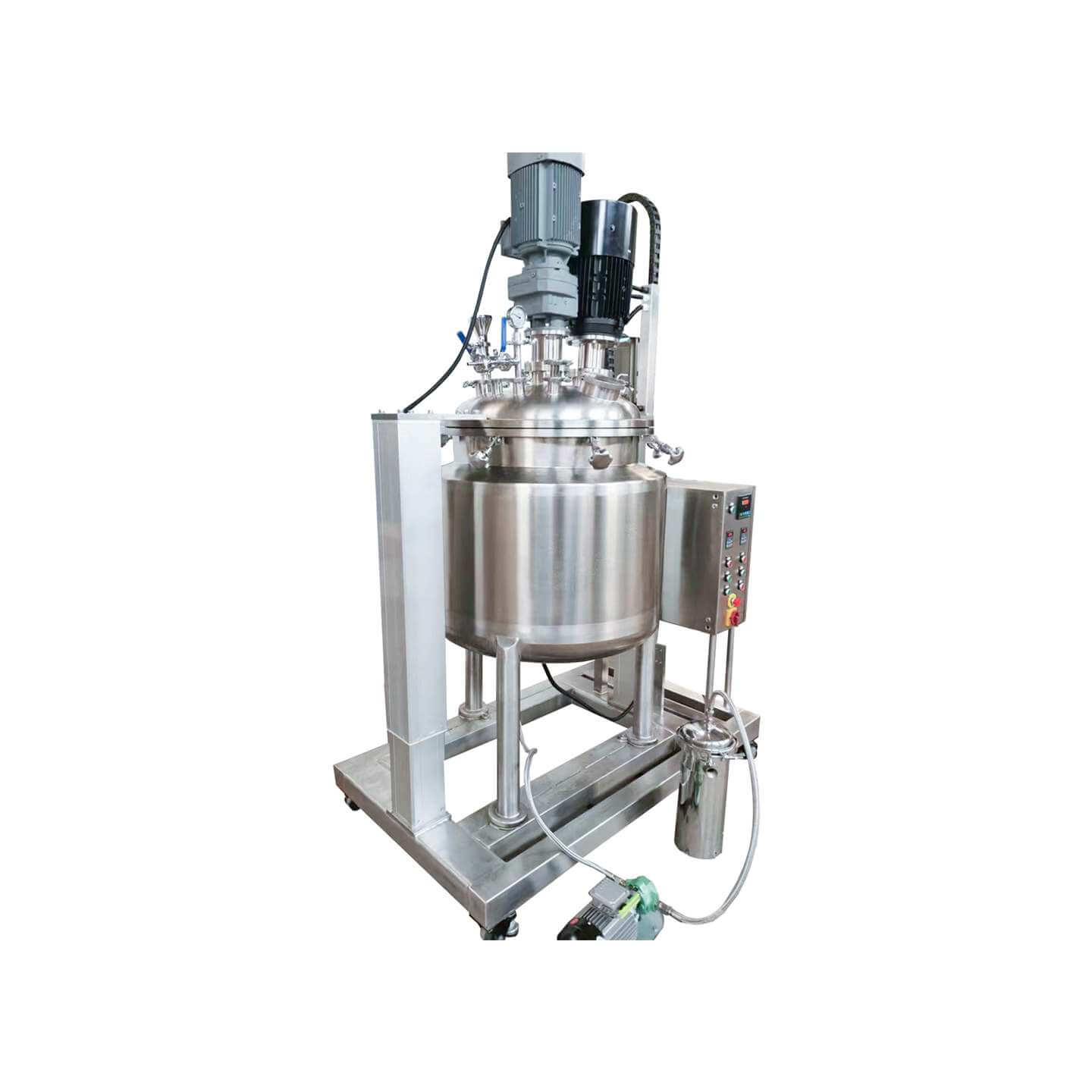

Laboratory Reactor
Laboratory reactor: used in the chemical industry, pesticide, paint, and other fields
Material
glass, stainless steel (316, 304), carbon steel, others
Capacity (L)
10-10000+
Mixing system
anchor, paddle, frame and others
Heating system
electric heating, oil heating and others
The laboratory reactor is small in size, beautiful in appearance, light, and fast in installation. It is composed of a pot body, pot cover, stirrer, jacket, support and transmission device, shaft sealing device, etc. The type of stirring device, rotation speed, sealing structure, heating method, etc. are produced.
Request a quoteThe laboratory reactor has carried out sample pretreatment through chemical analysis methods such as gas phase, liquid phase, plasma spectrum mass spectrometry, atomic absorption, and atomic fluorescence.
The laboratory reactor is a powerful assistant for decomposing samples when determining trace elements and trace elements. It can be used for the determination of lead, copper, cadmium, zinc, calcium, manganese, iron, mercury, and other heavy metals. It can also be used as a high-temperature, high-pressure, high-pressure, anti-corrosion, and high-purity reaction vessel. It can also be used for organic synthesis, hydrothermal synthesis, crystal growth, or samples. Decomposition and extraction etc. Sample pretreatment of heavy metals, pesticide residues, food, sludge, rare earth, aquatic products, organic matter, etc. for digestion.
Laboratory reactors are airtight containers capable of decomposing insoluble substances. It can be used for the pre-dissolution of the sample in the analysis of atomic absorption or plasma luminescence; it can also be used for a small amount of synthesis reaction; in addition, it can also quickly decompose the insoluble substance. The laboratory reactor is a manual spiral type and solid type, with a safe applicable temperature of 260°C and a maximum temperature of 330°C. It is a small-scale laboratory product.
1. The large volume of laboratory reactors is an effective method and development trend to increase production, reduce quality errors between batch production, and reduce product costs. Most of the laboratory reactors used for dye production are less than 6,000 liters, 30 million liters for other industries, and 20,000~40,000 liters for the dye industry.
2. The agitator of the laboratory reactor has developed from a single agitator to a forced circulation with a double agitator or an external pump. In foreign countries, in addition to installing the agitator, the kettle body can also be rotated along the horizontal line to increase the reaction speed.
3. The automation and continuous production of the anti-laboratory reactor replace the cumbersome manual work. If process control is adopted, it can ensure stable production, improve product quality, increase revenue, reduce physical labor, and eliminate environmental pollution.
4. Reasonably utilize the thermal energy of the laboratory reactor, select the best process operating conditions, strengthen insulation measures, improve heat transfer efficiency, minimize heat loss, and make full use of the waste heat and thermal energy generated after the reaction. The application of laboratory reactor heat pipe technology is the direction of future development.

Laboratory reactor temperature control equipment is the main equipment for realizing chemical reactions in pharmaceutical production. In the field of temperature control in the pharmaceutical industry, many system control methods are designed as intelligent control methods combining conventional PID control and fuzzy control. The control method research is of great significance. In the actual chemical production process, temperature is one of the common process parameters in industrial production, and any physical change and chemical reaction process are closely related to temperature. Temperature control of laboratory reactors plays an important role. Therefore, it is very important to accurately and effectively control the temperature of chemical reactions in laboratory reactors.
The kettle body of the laboratory reactor temperature adjustment equipment is characterized in that a temperature adjustment coil is installed inside the kettle body, one end of the temperature adjustment coil is the inlet end, the other end is the outlet end, and the inlet end and the outlet end are respectively fixed on the top of the kettle body. The temperature control coil is formed by lining the outer surface of the stainless steel pipe and winding it in the axial direction. When the material is synthesized, cold liquid or hot liquid is directly injected into the installed temperature control coil to increase the contact surface of the temperature control point during liquid synthesis, to achieve the purpose of rapid temperature control. It is characterized in that the temperature of the liquid can be easily and quickly controlled during the liquid synthesis reaction, and the structure is simple.




